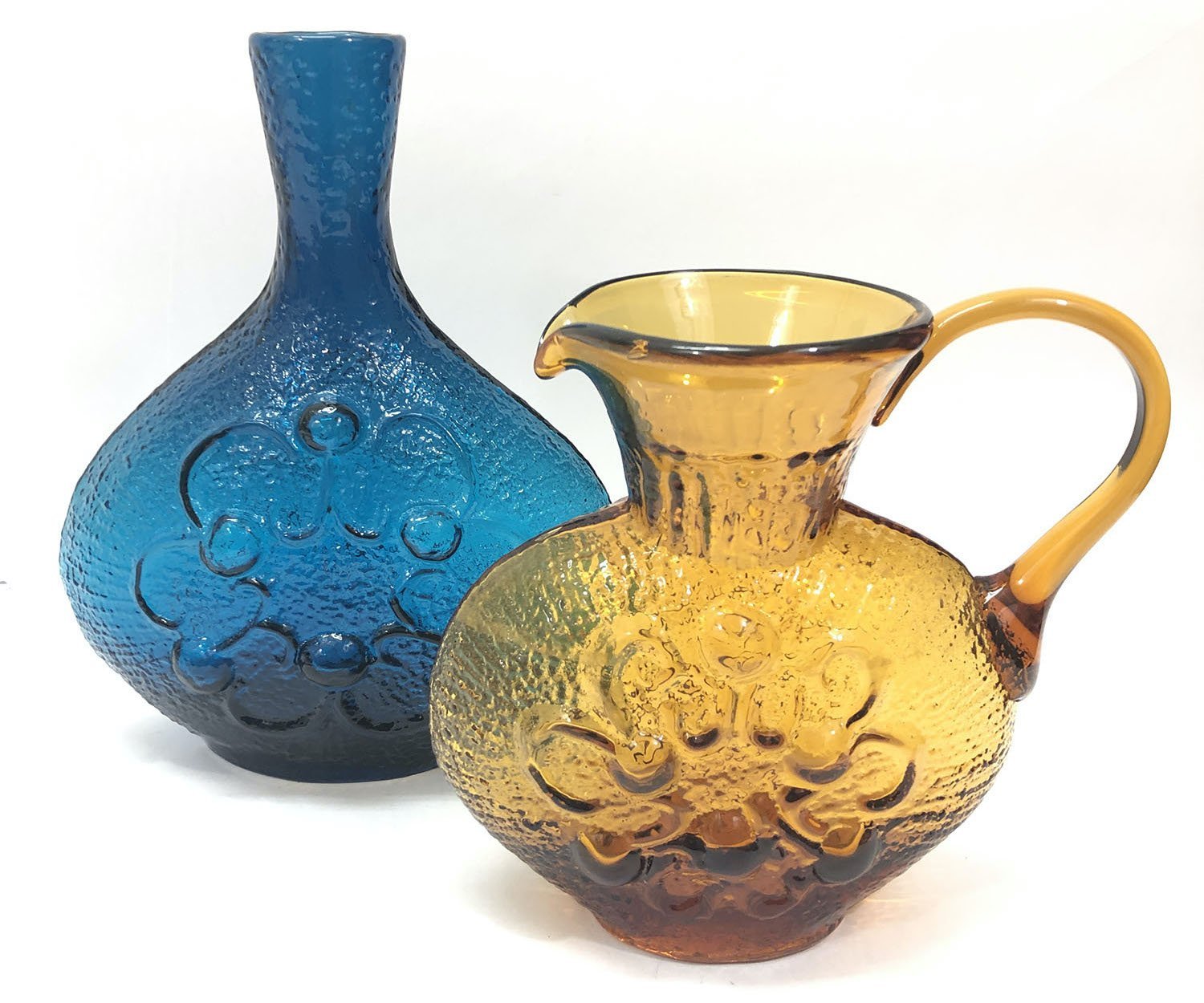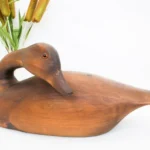
Open Daily 10am - 5pm
12,000sq.ft. of amazing items!
Free and easy parking!

Here in the desert, glass is big big big. It’s a touchstone of mid-mod decorating and can add portable color to every room. Apart from its decorative value, antique and vintage glassware is also an enormous collectible category. The varieties are endless and all but the most exclusive examples are still affordable. I’ll deal with the high-end (Lalique, Stueben, Tiffany) in future columns but for now here’s an overview to get you started.
Glass – essentially a product of heated sand – has been known to mankind since the Bronze Age. Ornamented glass dates to the dawn of Christ when craftsman from Venice and elsewhere would carve intricate designs into glass objects as they emerged from the furnace.
More recently, the Art Nouveau, Art Deco, and Arts & Crafts movements all spawned distinctive glassware styles. This was the so-called “American Brilliant” era of glassmaking and remains a touchstone period for glass collectors.
Among the pioneers was the Fenton Glass Company, an early innovator that blossomed in 1907 with the introduction of Carnival glass. It subsequently produced a wide range of styles, each piece created by hand. Hobnail and Crested glass were among its many popular lines. Fenton glassware made after 1973 carries a raised maker’s mark but pieces made beforehand often shed their paper stickers and thus can be more difficult to identify. Prices for most Fenton products remain reasonable today.
So-called Art glass debuted with the new century, its innovative non-linear designs and flowing colors a harbinger of things to come. Over the years, its popularity has ebbed and flowed but has remained a collector’s staple. The category includes big names like Durand and Tiffany along with countless smaller makers. As with most categories, pricing is subject to condition, rarity, and maker. Premium pieces can extend well into four figures.
Carnival glass came about as an inexpensive alternative to Art glass and was immediately embraced by consumers. Its cheaper production methods resulted in more flaws and occlusions but buyers didn’t seem to mind. Interestingly, the name stems from its early use as carnival prizes, a practice that continues today. In addition to its characteristic imperfections, carnival glass is usually identified by an iridescent sheen.
Demand for premium tableware from Gilded Age titans prompted the emergence of Crystal glass. This high-quality glassware included the addition of lead into the manufacturing process, adding weight, strength and resonance to the end product. Waterford was and remains the name synonymous with crystal. To find out if your glassware is crystal, tap it lightly for a resonant ping and hold it up to a light source to look for reflection and rainbows.
Depression glass is yet another budget category that has grown in collector circles. Its low cost, moderate quality, and wide range of patterns and designs made it the people’s glassware during the 1930s. However, Depression glass is prone to chipping and cracking, so check it carefully before you buy.
Two more categories worth noting in this whirlwind tour are Kitchen glass and Milk glass. Jeanette Bottle Works was perhaps the best known of the Kitchen glass makers, its Jennyware line celebrated for its informality and utility. Milk glass came about as a domestic alternative to the high-cost glassware of foreign makers, emerging in the late 19th century and maintaining its popularity ever since. Available in a range of colors (not just white), its designs often featured distinctive animal motifs and is most easily identified by an iridescent ring around the edges when held up to light. Big names include Atterbury, Kemple, and Westmoreland.
So there you are. There are few categories as diverse as glassware so hold your breath and jump on in.





We’ll email you about the latest events, sales, and general store updates.

Our antique gallery is located just south of downtown Palm Springs, with free parking and air conditioning throughout.
Open Daily: 10am – 5pm
505 E Industrial Pl.
Palm Springs, CA 92264
© Copyright Antique Galleries of Palm Springs 2024